Fact Sheet FS1273
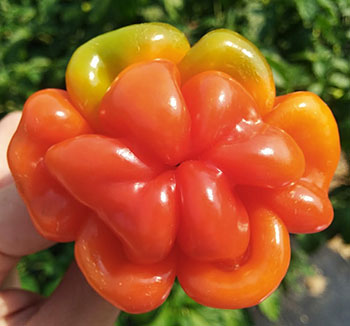
Figure 1. Rutgers' "Rosebell Red" Habañero fruit. (Courtesy of Heather Healy)
Quick Facts
Other Names for Habañero Peppers: Congo, bonny, scotch bonnets, rocatillos, cachucha, goat peppers, etc.
Core Nutritional Value: Rich source of dietary fiber and Vitamins A and C.
Scoville Heat Units (SHU–measure of heat/pungency): 150,000–350,000 (up to 50 times hotter than Jalapeño). Does not include the super-hot peppers such as Carolina Reaper and Trinidad Moruga Scorpion, with over one million SHU.
Approximate Yield: Aji dulce: 35,000 lb/A; Mexican habañero: 32,500 lb/A; African habañero (Atarodo): 28,000 lb/A (all from transplanted peppers under plastic mulch)
U.S. Growing Areas: Plant hardiness zones 3–11
Major Consumers: Africans, Hispanics, and other ethnic groups in the U.S.
History and Common Names
Habañero peppers (Capsicum chinense, Jacq.) originated from South America where they have been domesticated for more than 6,000 years.5 An intact fruit found in a cave in Peru was dated 6,500 years old.2 The species designation chinense, meaning "from China", was mistakenly given by Dutch physician Nikolaus Joseph von Jacquin in 1776. Jacquin believed the peppers originated in China, while the true origin is the Amazon Basin.2 Habañero is commonly used to describe the species although the name, meaning "from Havana", refers to a specific fruit type from the Yucatan Peninsula of Mexico and Belize.2 Columbus introduced peppers to Europe, where their use eventually spread to Africa and Asia.1 Native Americans transferred the fruit from the Amazon Basin to the Caribbean.2 Today, habañeros are grown worldwide, with the Yucatan peninsula of Mexico producing about 1,500 tons per year.3 In the United States, New Mexico, California, Florida, and Texas are among the top commercial producers.6
Significance
The best known chiles of the C. chinense species are habañero and scotch bonnet. Habañeros are among the hottest peppers known, about 50 times hotter than a jalapeño, and vary in shape, size, color, and pungency.2 The most significant quality of C. chinense is the relative content of capsaicin, the chemical substance that determines the degree of pungency (hotness) of the taste. Pungency is measured in Scoville heat units (SHUs) and ranges from zero pungency (as in bell/sweet peppers) to more than one million SHUs (as in the Carolina Reaper, which holds the Guinness world record for hottest known pepper: ~1.57 million SHU).1
Capsaicin has been linked to several health benefits including pain relief; preventing the spread of prostate cancer cells; lowering the risk of Type 2 diabetes; and the treatment of asthma, coughs, sore throats, and arthritis.1 The peppery heat stimulates secretions that help clear mucus, and more recent studies have shown the success of topical capsaicin application as a treatment for osteoarthritis pain.1 Capsaicin has been shown to increase thermogenesis and is often included in many weight-loss supplements.
Habañero fruits are characterized by a distinctive fruity aroma that is often described as apricot or citrus–like2. African, Asian, Caribbean, and Latin American communities have a long history of integrating hot peppers in their diet.5 The most common dietary usage of habañero peppers is in hot sauces, often mixed with carrots and onions. The peppers can also be used fresh in salsa or dried and added to stir fry dishes, soups, or stews.3 Habañero peppers are rich in fiber and vitamins A and C.5 Vitamin A is known generally to boost immunity. Deficiency of vitamin C can lead to anemia, scurvy, infections, bleeding gums, and muscle degeneration.6 Vitamin C has antioxidant activity that aids in the prevention of various illnesses.
Habañero peppers are also used as ornamental plants due to their attractive fruits of different sizes, shapes, and colors. Mature habañero fruits from various selections display different colors including red, orange, yellow, brown, or white. Fruits are generally short and obtuse with significant corrugations that add significant attraction to fruit appearance. Some have a pointed tip, which adds to the beauty of the fruit.3 On the plant, the fruit is generally pendulous; very rarely the fruit may be carried upright.
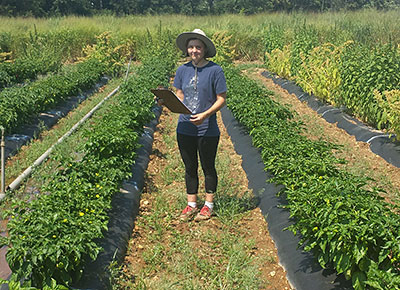
Figure 2. Habañero pepper plant growth habit under conventional production. (Courtesy of Albert Ayeni)
The Plant
Habañero peppers are perennial tropical plants that belong to the Solanaceae or nightshade family along with potato, tomato, eggplant, and tobacco. They range from 1 to 4.5 feet tall with the average height in U.S. gardens being about two feet.1 The plant responds significantly to soil fertility, especially the organic matter level. Habañero pepper plants grown in organically managed plots with organic matter level close to 2.5% attained plant sizes nearly twice those produced in conventionally managed plots with organic matter less than 2%. The plant has a bifurcative or trifurcative branching pattern that occurs repeatedly at the tip of each new branch. Branching slows down as fruiting begins, and only stops completely when the temperature drops in the fall. Figure 2 shows the growth habit of selections grown in plastic mulch under conventional production.
Growing Conditions
Habañero peppers are best grown in full sun, but can be grown in greenhouses with controlled light, temperature, water, and relative humidity. Fruit yields are notably low in the greenhouse compared with field planting, due to difficulty with pollination. Unlike C. annum spp. which flowers and fruits readily in the greenhouse, most habañero selections display significant self-incompatibility under greenhouse conditions. They require a deliberate cross pollination mechanism to promote ovule fertilization and fruiting. Optimum temperature for growing habañero peppers is between 70 and 85°F (~21–29°C). Plants may drop their flowers and fruit will not set with day time temperatures higher than 90°F (32°C) and night time temperatures above 85°F (~24°C). Habañero peppers may be grown during the summer and early fall in Plant Hardiness Zones 3 to 11. Prolonged exposure to temperatures below 32°F results in loss of leaves, fruit damage, and ultimately plant death.3
Production
Soil and Fertilizer Requirements
Habañero peppers thrive in fertile, well-drained soils and may grow in a pH range of 4.3–8.3, but the optimum range is 6.0–7.0.3 A field soil test should be performed to determine the need for fertilizer treatment and liming.3 Typical fertilizer formulas include 5-10-5, and 10-10-10 NPK. With 10-10-10 formulation, side dressing with 50 lb/A (~56 kg/ha) is recommended at transplanting and again 4–6 weeks later or when the first flowers appear.3 During land preparation as determined necessary by a field soil test, the full amount of phosphorous and 50% nitrogen (N) and potassium (K) may be applied. The remaining N and K should be applied 4–6 weeks later.3 Excess N may result in excessive vegetative growth with a negative impact on fruit set. It may be necessary to apply magnesium nitrate or sulfate and iron in the form of EDHA-chelated iron if deficiency symptoms appear.3 Compost may also be applied during land preparation and benefits include improvement of water-holding capacity, drainage, and overall fertility of the soil.4
Establishment
In New Jersey, habañero pepper seedlings may be raised in plugs in the greenhouse between April and May to early June. Growth media temperatures between 70–80°F will encourage seed germination.3 Seedlings grow well under fluorescent light 10–12 hours a day.4 Transplanting is done between mid-May (after the threat of frost is over) and early June for best results. Transplanting later than the first week in June reduces yield significantly because of reduced growth period before the frost. Transplanted seedlings produce two to three times higher yield than direct-seeded.3 Habañero peppers are perennials physiologically and are termed full season, meaning they may require close to 200 days to produce ripe fruit.4
At Rutgers University, we achieve early fruiting by starting the seedlings early in the greenhouse, allowing 8–10 weeks before transplanting. With this practice we have significantly reduced the number of days to flowering and fruiting in the field and extended the fruiting duration before the frost. Raised beds (36 inches wide, 4–8 inches high, and 5–6 feet between adjacent beds) are recommended to control weeds, warm the soil, and minimize standing water to reduce disease incidence. Seedlings should be transplanted when daytime temperatures average 70°F and night time temperatures stay above 55°F.
It is recommended that seedlings be hardened off and transplanted into punched holes 2–3 inches deep and completely covered with field soil. Habañero peppers vary significantly in ultimate size depending on type and media fertility. At Rutgers University we plant at 15–18 inches apart in rows separated 3–4 feet. Staking may be required for varieties with vigorous growth habits to ensure high-quality harvest by reducing the risk of the fruit making contact with the soil or branch breakage due to fruit weight.3
Field Management
Planting on bare ground increases weed problems, therefore, raised beds are advised. When manual weeding is the preferred method, two-hand weedings are required to keep weeds in check. The first weeding is done 2–3 weeks after transplanting followed by another weeding 2–3 weeks later. In addition to keeping weeds under control, black plastic mulch is recommended to increase earliness in fruiting and overall yield. White plastic mulch can be used in later spring plantings to avoid burning the seedlings. Silver reflective plastic mulch may benefit late planted peppers by repelling virus-carrying aphids.
Major insects of Habañero peppers include: pepper weevil (a rare pest in New Jersey), beet army worm, tomato fruit worm, looper, melon thrips, and aphids. Plants should be scouted routinely to monitor for any insect or disease signs or outbreaks. Habañero peppers are susceptible to insect and disease problems. Bacterial leaf spot, Phytophthora crown rot, and viruses are common and must be managed accordingly. For more information on these pest problems please see the annual Mid-Atlantic Commercial Vegetable Production Recommendations.1
Harvesting and Yield
Habañero pepper harvesting can be quite laborious due to high fruit count and yield per plant. However, some varieties may set up to six fruit per node allowing for the harvest of multiple fruit at once.4 Habañeros are hand-harvested 3–4 times during the growing season and may be picked green or harvested ripe.4 Fruit with smooth shiny skin that are firm to the touch should be harvested. Habañero peppers are indeterminate and continue to produce ripe fruits at differing rates. It is common practice to harvest all plots at 1–2 weekly intervals. Harvesting continues until frost terminates the process in the fall. After frost a majority of the fruit yield is lost to chilling injury, but fruit particularly from the base of the plants may be harvested for up to four more weeks until the yield is exhausted.
Fruit yields for transplanted Aji dulce planted in double rows can be as high as 47,500 lb/A, while Mexican habañero may be as high as 44,500 and African habañero (Ata rodo) 38,000 lb/A. The yield of transplants planted in single rows (lower population) can be as high as 22,000 lb/A for Aji dulce, 20,500 lb/A for Mexican habañero, and 17,500 lb/A for African habañero.
Handling
The fresh fruit will last 3 to 5 weeks if stored between 45–50°F and 95% relative humidity.3 Below 45°F the fruit is sensitive to chilling injury resulting in reduced firmness.3 Habañero peppers should be refrigerated immediately after harvesting to maintain quality.4 They can be stored in refrigeration at 35°F (1.6°C) for at least 4 weeks with minimal loss in fruit firmness. Fruit may be graded based on size and color and should be checked for insect damage or disease infection before storage.
Food Safety
Education of workers involved with the harvest and handling of habañero peppers is critically important. Those harvesting the peppers can spread human pathogens to others, particularly when the peppers are consumed without cooking. A robust worker health and hygiene training should include information on human pathogens commonly associated with fresh produce, signs of human illness, modes of cross-contamination, and proper handwashing techniques and restroom behaviors. A video introduction to worker health and hygiene training is available through the National Good Agricultural Practices Program.
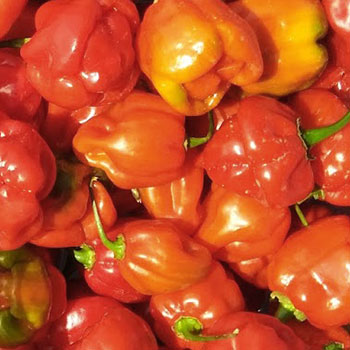
Figure 3. Rutgers' "Rosebell Red" Habañero fruit. (Courtesy of Albert Ayeni)
Containers used for harvesting, transport, and marketing should be appropriate for use and clean and free from potential hazards. Water, if used to wash peppers, should be of drinking water quality. Farms offering pick-your-own peppers should have handwashing stations available for visitors and ample signage on proper handwashing and produce handling. Single-use bag inserts are recommended for use inside pick-your-own operation containers. Peppers stored in refrigerated containers should be kept away from potential contaminants, including raw meats, eggs, dripping cooler condensation, field equipment, and personal items. More detailed information on on-farm food safety for fresh produce operations can be found online at the National Good Agricultural Practices program.
Care should be taken to educate workers and consumers about hot peppers and individual responses to them. Latex or vinyl gloves should be used when preparing hot peppers for consumption; the oils can cause a skin rash in some people and cause eye irritation in all people. Workers and consumers should not touch their eyes after contact with the peppers. Additionally consumers will need to understand the heat index of the hot pepper to determine how they will use it in recipes or if consumed raw.
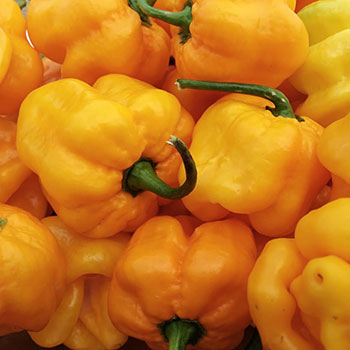
Figure 4. Rutgers' "Rosebell Yellow" Habañero fruit. (Courtesy of Albert Ayeni)
Marketing
Fresh market peppers may be stored in bulk containers like baskets, or packaged and portioned by weight. Market opportunities for fresh peppers include farmers markets, wholesale markets, local grocery stores, restaurants, hotels, roadside stands, pick-your-own, local small businesses, and processing firms.5 Small businesses specializing in value-added products, for example hot sauces or pepper powders, are additional market opportunities to explore.5 With pick-your-own the grower has the opportunity to save on harvesting costs but some of the disadvantages include damage to pepper plants and the danger of customer exposure to capsaicin. There is opportunity in selling habañero peppers at farmers markets where they may be differentiated by offering a variety of unique shapes, sizes, and colors to attract various types of customers. Offering customers information on nutritional value, heat level, and recipes have enhanced sales and customer enthusiasm. Based on sales, the habañero fruit types that top the list at Rutgers' farmers markets in New Brunswick, NJ in 2015 are shown in Figures 3–6.
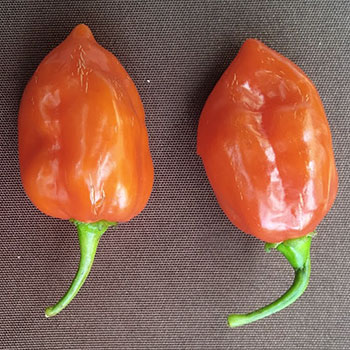
Figure 5. Rutgers' "Naveled" Habañero fruit. (Courtesy of Albert Ayeni)
Seed Sources
Listed below are some seed companies that sell ethnic crop seeds including habañero peppers. Currently stocked habañero cultivars (cvs) by the companies listed is shown below (accessed November, 2016). The contact information is available on the website for each of the seed companies for inquiry on availability of the seed for the habañero of interest.
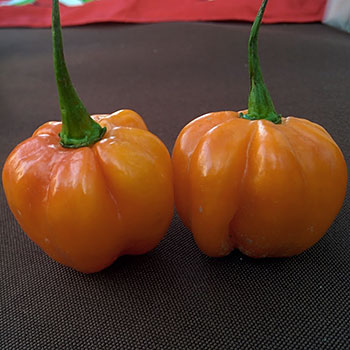
Figure 6. Rutgers' "Pumpkin" Habañero fruit. (Courtesy of Albert Ayeni)
Growers interested in Rutgers selections may contact Albert Ayeni (ayeni@njaes.rutgers.edu, +1-848-932-6289) or Tom Orton (orton@njaes.rutgers.edu; +1-848-932-3100 ext. 4112) for more information.
Acknowledgements
We are indebted to the New Jersey Agricultural Experiment Station for funding our field work on habañero peppers; and our field technical assistants at Rutgers Horticulture Farm III in New Brunswick, NJ and Rutgers Agricultural Research and Extension Center in Upper Deerfield, NJ for their support with field preparation and management. The "Ultra-Niche Crops for the Progressive New Farmer Project" is sponsored by the USDA–NIFA Beginning Farmer and Rancher Development Program.
References
- Ayeni, A. William Sciarappa, Richard VanVranken, Ramu Govindasamy, Venkata S. Puduri, Kim Pappas, James Simon, Frank Mangan, Mary Lamberts, and Gene McAvoy 2009. Chiles or Chilies (Mexican/Central American) and Ajis (Caribbean) (Ethnic Peppers). Rutgers' NJAES-RCE Fact Sheet FS1112, 3 pp
- Bosland, P. and Dewitt, D. 1996 Peppers of the World and Identification Guide. ISBN 0-89815-840-0; p 57-61
- Bosland, P. and Dewitte, D. 2009. The Complete Chile Pepper Book. Dover Publications 336 pp
- Iqbal, K., Khan, A., and Khattak, MMAK. 2004. Biological Significance of Ascorbic Acid (Vitamin C) in Human Health - A Review. Pakistan Journal of Nutrition 3:5-13
- Levetin, E. and McMahon, K. 2012. Plants and Society. 6 ed. New York: McGraw Hill, Print. 3
- Singh, R.H., Rankine, L.B., Seepersad, G. 2006. Market Intelligence Report: Hot Peppers. The CARICOM Regional Transformation Programme for Agriculture. www.caricom.org/jsp/community/agribusiness_forum/hot_pepper_market_intelligence.pdf, accessed 12/31/15
March 2017
Copyright © 2024 Rutgers, The State University of New Jersey. All rights reserved.
For more information: njaes.rutgers.edu.
Cooperating Agencies: Rutgers, The State University of New Jersey, U.S. Department of Agriculture, and Boards of County Commissioners. Rutgers Cooperative Extension, a unit of the Rutgers New Jersey Agricultural Experiment Station, is an equal opportunity program provider and employer.


 Project sponsored by the USDA-NIFA Beginner Farmer and Rancher Development Program.
Project sponsored by the USDA-NIFA Beginner Farmer and Rancher Development Program.